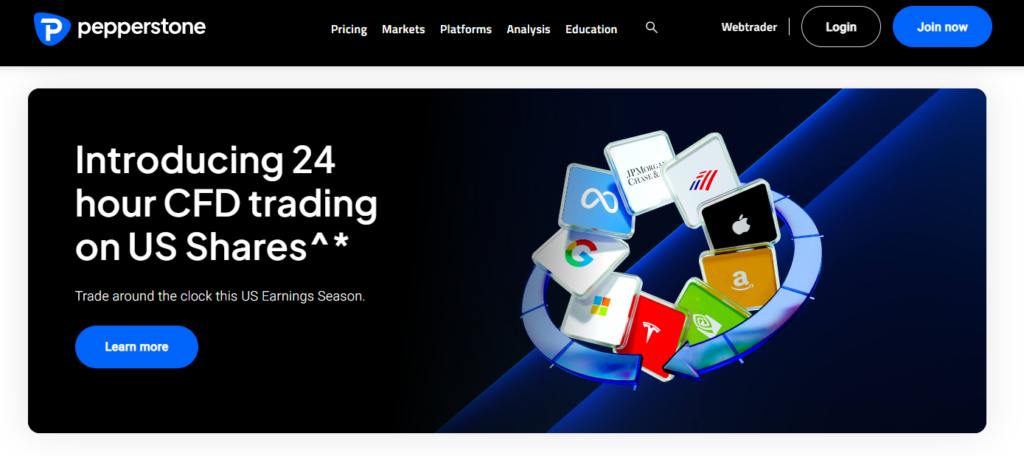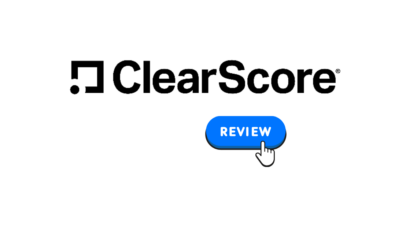Disclosure: Privacy Australia is community-supported. We may earn a commission when you buy a VPN through one of our links. Learn more.
The Ultimate Pepperstone Review: A Comprehensive Guide for Australian Traders
The trading world is full of brokers looking to grab your attention and get you to use their platform. For that reason, it’s important to find the right one for your needs and trading goals. After all, you don’t want to choose a broker, only to find that it doesn’t have the features or specifics that will help you in your trading endeavours.

Here at Privacy Australia, we’ve done the research in hopes of assisting you in finding the best forex trading platform that fits the bill and helps you achieve your aims. It doesn’t matter whether you’re experienced in trading or just starting out, there is a platform out there for you. Importantly, Privacy Australia isn’t a broker or a firm, we’re just a team of independent researchers on a mission to uncover the best tools and software. As such, this Pepperstone Australia review covers everything you need to know about this popular online brokerage firm.
Our review aims to give you all the information you need to make an informed choice about whether Pepperstone trading is the broker for you. We’ll discuss the pros and cons, product offerings, customer support, compliance, and pricing. In the end, the choice is yours but you’ll have plenty of knowledge to hand. From there, you can move forward with your trading journey with confidence and peace of mind.

TL;DR
- Peppertone is a highly-regarded online broker based in Australia. It offers many trading instruments and trading platforms for all needs, including experienced traders and those just starting out.
- This broker is renowned for its tight spreads, fast execution speeds, and competitive pricing. Both retail and institutional traders can use Pepperstone with ease.
- It’s important to weigh up the pros and cons because Pepperstone may not be the correct choice for all traders. In that case, there are alternatives to explore.
- Most Australian traders will find Pepperstone a robust choice for their needs. However, it is most useful for experienced traders who have extensive knowledge already.
Criteria Breakdown
To help you explore Pepperstone’s features in depth, we created a set of criteria to assess each feature and important point. This includes the product’s features, trading platforms, customer support, compliance with regulations, and pricing. The aim is to give you as much information as possible so you can make an informed decision on whether Pepperstone trading is for you or whether an alternative might be better.
About Pepperstone
Let’s start with the basics. Pepperstone is an online brokerage firm based in Australia. It’s one of the market leaders and it caters for all types of traders, including institutional and retail worldwide. Pepperstone’s trading goes back to 2010 when it was founded and it quickly established itself within the industry as a leader in the field. It offers a large range of financial instruments and advanced trading instruments, including foreign currencies, ETFs, cryptocurrencies, and stocks. Additionally, it offers fair and competitive pricing structures.
Pepperstone’s headquarters are located in Melbourne, but they also have regional offices in the US and UK. This means that this broker also has access to the New York and London stock exchanges, while also being connected to China and Japan. Because Pepperstone is a global broker, it also needs to be regulated by external bodies outside of Australia, including the EU, UK, USA, South Africa, SE Asia, and Cyprus. For that reason, it takes regulatory compliance very seriously.

Pros
Competitive Pricing
One of Pepperstone’s most renowned features is its competitive pricing structure. This is a point which is repeated by users and experts time and time again. It offers tight spreads and low rates of commission across all its trading models. This point ensures that you can make the most of your potential profits and trading costs remain low.
Advanced Trading Platforms
Pepperstone’s access to top trading platforms like MetaTrader 4 (MT4) & 5 (MT5), and cTrader means plenty of high-tech tools to enhance your trading experience. These include easy analysis, fast and efficient order execution, and automated trading. Whether you’re an experienced trader or a beginner, these tools are easy to access and use.
Fast Execution Speeds
Another major advantage is Pepperstone’s fast execution speeds. This is all down to its use of the most-up-to-date infrastructure and execution algorithms. If you identify an opportunity, you can jump onto it immediately, without worries over delays or slippage. Of course, this maximises your chances of making bigger profits.
Diverse Product Offerings
With a range of different financial instruments on offer, Pepperstone caters to many needs. It’s possible to trade with forex, indices, cryptocurrencies, commodities, and stocks. Whether you’re keen to minimise risk or you’re happy to dabble, you’ll find a trading option for you. Additionally, there are plenty of educational resources available to help you learn about different instruments if you want to change course.
Regulated and Secure
Of course, one of the most important aspects of choosing a broker is ensuring it is regulated and licensed. Pepperstone is very strict about its adherence to regulatory standards, fair trading practices, and protection of funds. This ensures that you feel confident and have peace of mind whenever you are trading or looking to make a trade.
A Range of Educational Resources
Beginner traders don’t need to worry, as Pepperstone has a range of educational tools and resources on offer. This is ideal if you’re just starting out and you’re not sure either how to use the platform itself, or about trading in general.
In particular, Pepperstone offers articles and video tutorials for beginner traders to help them become more familiar with the dos and don’ts, best strategies, and things to avoid.
Dedicated Mobile App
The Pepperstone cTrader app allows users to conduct their trading endeavours on-the-go. This is a particular plus point if you see a great opportunity for profit and you don’t want to waste time waiting until you return home to your desktop computer. Again, this gives you the best chance to maximise your profits without delay. You can download this app through the Play Store and Apple Store.
Cons
Limited Product Range for Certain Markets
Due to regulatory restrictions, some financial instruments may be unavailable depending upon your location. For example, cryptocurrency trading may not be available in your region if there are restrictions that Pepperstone must adhere to.
Of course, this is something which Pepperstone cannot change and it’s always better to stick to regulations whether they are favourable for the business or not.
Criteria Evaluation
Now we know about Pepperstone’s features, let’s measure them against our pre-set criteria and see how they match up. This information will help you make your final decision on whether Pepperstone is the best online broker for you.
Trading Platforms
There’s no denying that Pepperstone excels in its trading platforms and all of them are very easy to use. With MetaTrader 4 (MT4), MetaTrader 5 (MT5), and cTrader available, this opens up a range of useful tools for specific needs. For example, you’ll find charting tools, technical indicators, and even automated trading. These features are ideal for experienced and intermediate traders and help you to plan your future moves.
Product Offerings
Pepperstone offers several financial instruments, including indices, forex, cryptocurrencies, ETFs, stocks, and commodities. These cater to a range of different needs and risk appetites. However, not all options will be available worldwide as regional regulations may impact the range of instruments Pepperstone can offer.
Pricing
A major advantage of Pepperstone as a broker is that it offers very competitive pricing, therefore allowing you to keep more of your profits. Low commissions in particular are a highlight, along with tight spreads. Out of all of Pepperstone’s many features, this is one that is mentioned the most often by users and experts alike.
Customer Support
Pepperstone offers several channels in the event of a problem. You can connect with their customer support team via email, telephone, or live chat. However, it may be somewhat limited.
Regulatory Compliance
For total peace of mind, Pepperstone ensures all regulatory standards are adhered to. This includes protection of your funds and fair trading practices. When it comes to trading, this is a vital element to give confidence and ensures that you use the same broker more than once.
Community Reviews and Expert Advice
Reading our Pepperstone Australia review is one thing, but you need to hear about real-time experiences from users and experts in the trading industry. Here are some notable reviews about Pepperstone’s services.
Community Reviews:
- “I have been a client of Pepperstone around 3 years and I am glad that I was contacted my new client manager Richa Kawra and offered me free tickets to footy game.Nice to have perks from Pepperstone.So huge thank you to Richa and Pepperstone team.“ – Dilan Aravinda
- “As a Pepperstone Pro account trader actively trading the markets, commissions can easily add up, but with their rebate tier system, rebates are paid daily back into your trading account. Cheers to Mitch Comben, my premium account manager, for putting me on this program.” – Tran
Expert Advice:
- “Pepperstone has a firm focus on executing trades in forex. Some of their bid-offer spreads are as tight as they get and the direct access into the markets ensures traders access deeper levels of market liquidity.” – thebull.com.au
- “Pepperstone is a great option for forex and CFDs traders – regardless of experience level.” – forexbrokers.com

We’ve talked about Pepperstone’s competitive pricing structure, but let’s delve into the specifics so you can make a further, informed assessment.
If you are keen to trade in foreign currencies, Pepperstone’s forex raw spreads start at 0.0 pips on major currency pairs. It has an average speed of 0.1 pips, with no additional commissions charged. This is very favourable compared to many other brokers on the market.
For stock trading, you’ll find competitive commissions that start from just $3.50 per side for US stocks and for international stocks, $5.50 per side. Spreads are also tight, which ensures cost-effectiveness across the board.
While Pepperstone offers value for money in general, it’s important to remember that the exact pricing depends on several factors. This includes how long you’ve had your account and how much trading you’ve done in the past. You’ll receive better conditions if you’re regularly active and have a larger account, compared to those who recently joined and haven’t done much trading yet.
Alternatives to Pepperstone
IG Markets
IG Markets is a popular CFD provider that offers a range of different trading models for all types of traders. This includes forex, cryptocurrencies, and commodities, to name just a few. Similar to the Pepperstone broker, IG Markets has competitive pricing scales, it has a large range of educational resources for beginner traders. This is another well-regarded broker that has an established history for peace of mind.
CMC Markets
CMC Markets is a great choice of broker for new traders who want to learn the tools of the trade. With a wide range of educational resources on offer, including webinars and tutorials, it’s easy to understand more about the world of trading. For more experienced traders, there are a number of options available, with competitive pricing and a number of trading routes. Overall, CMC Market is an easy-to-use option with an app for on-the-go trading.
Saxo Markets
Saxo Markets offers competitive prices, low fees, and a wide range of investment products. With its robust security, this broker gives peace of mind to all users, and it’s another great option for beginners as well as more advanced traders. Saxo Markets also offers many tools to help with analysing trades and making your next move. The Saxo Markets app is also easy to use and available on all platforms, including Google Play and Apple Store.
FAQs
What trading platforms does Pepperstone offer?
Pepperstone’s trading platforms are easy to use for both beginners and experienced traders. Additionally, its library of educational resources helps beginners understand the trading world and learn the basics quickly and easily.
The site uses industry-leading platforms, such as cTrader, MetaTrader 4 (MT4), and MetaTrader 5 (MT5). These give access to a large number of tools to help make trading easier and faster, including advanced charting tools, technical indicators, and automated trading.
What financial instruments can I trade with Pepperstone?
Pepperstone offers several trading options, however, it’s important to remember that certain trading instruments may not be available depending upon where you are in the world. However, Pepperstone offers options such as stocks, indices, forex, cryptocurrencies, ETFs, and commodities.
All financial instruments have specific fees and commissions attached to them, so make sure you do your homework and fully understand from the start. However, as we’ve explored, Pepperstone is generally value for money and fees/commissions are very low overall.
Is Pepperstone a regulated broker?
Pepperstone is a licensed and regulated online brokerage firm based in Australia. As such, they are regulated by ASIC (Australian Securities and Investments Commission) and they also hold an Australian Financial Services License. Pepperstone takes regulation adherence very seriously, which gives peace of mind from the get-go.
Additionally, the broker is also regulated by other bodies in the other areas they operate in with total transparency. All regions have their own rules and regulations and Pepperstone ensures that they tick all boxes with regards to this. Again, this gives you more peace of mind and protects your money without any undue risks.
What account types does Pepperstone offer?
There are a number of different accounts available, all of which cater to different needs and levels of experience. Pepperstone offers a Standard Account, Swap-Free Account, and Razor Account. The differences in these accounts come down to their pricing, features, and conditions for trading.
Choosing the right account is important as this will affect how you trade, ease-of-use, and any features that suit your specific requirements. Take your time choosing your account and peruse all options before making a final decision.
How can I open an account with Pepperstone?
To open an account with Pepperstone, simply visit their website and begin the application process. Click on the “open an account” option and follow the process according to the on-screen instructions. This is a very easy process, and you’ll be guided every step of the way. Make sure you have all necessary information to hand as you will need to give personal information, prove your identity, and you’ll also need to complete any documentation you’re asked for.
Once you’ve done this, your account will be verified. This may take several hours or days, but is generally a fast process.
Then, once you’ve completed the Pepperstone broker application, you can start trading immediately.
Final Thoughts
There are many online brokerage firms available across Australia, but Pepperstone has certainly done a lot to cement its place amongst the top-rated choices. Its easy-to-use interface and range of features helps it to stand out above its competition, and it’s a great choice for any level of broker.

With a large number of trading solutions for institutional and retail traders, Pepperstone offers low fees and a much greater chance of maintaining your profits. It has a number of top features, including advanced trading platforms, competitive pricing, and many product offerings. On top of all of this, you can rest easily in the knowledge that Pepperstone takes regulatory compliance very seriously indeed. All in all, Pepperstone is a very strong contender amongst the Australian trading scene.
Of course, every broker has its pros and cons, and while Pepperstone is a very strong option, it does have a few areas where it falls short. It’s important to think carefully about your needs and trading strategy to ensure that it’s the best choice for you.
If you need to learn more about trading before you begin, such as day trading strategies for beginners, you’ll find many educational resources through Privacy Australia.
This includes video tutorials and in-depth articles helping you to understand the ins and outs of the trading world. Pepperstone also has a dedicated mobile app, so you can easily trade on-the-go.
It’s true that Pepperstone may not be the perfect choice for everyone, and if you find that’s the case, there are other online brokers who may suit you better. These options include CMC Markets, Saxo Markets, or IG Markets.
At the end of the day, your choice of broker comes down to your specific and personal needs. That means you need to think carefully before making a move and do your research about the lowest spread forex brokers and other trading instruments. Arm yourself with all the necessary knowledge and make your decision from there. From Privacy Australia, we hope this Pepperstone Australia review has been helpful in assisting you in making a final decision.
You Might Also Like:




